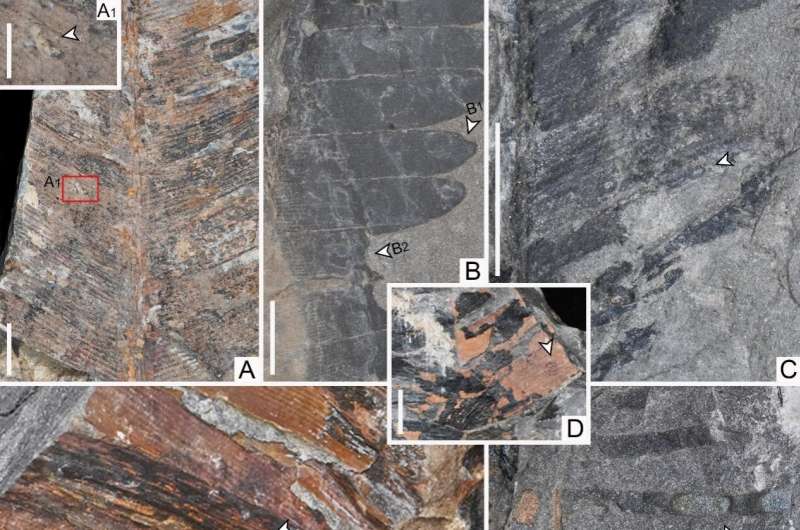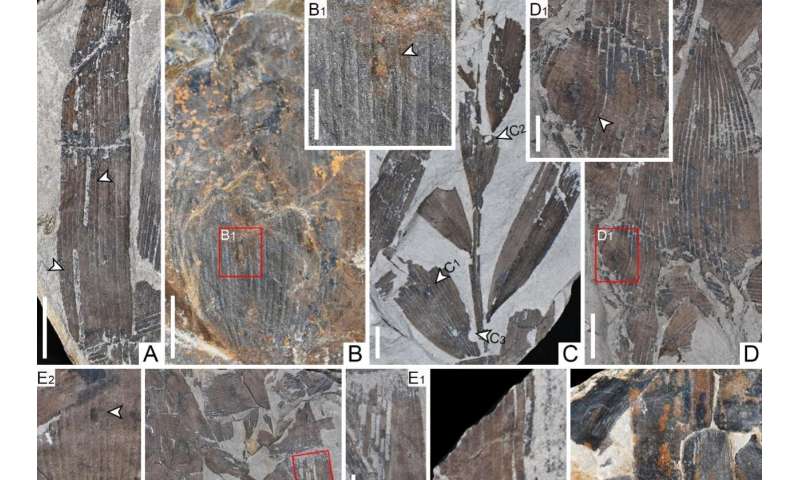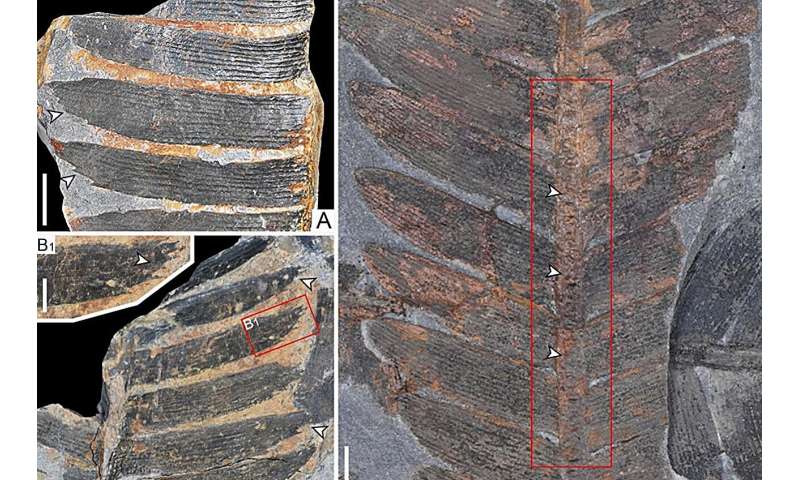This article has been reviewed according to Science X's editorial process and policies. Editors have highlighted the following attributes while ensuring the content's credibility:
fact-checked
trusted source
proofread
Fossils reveal plant–insect interactions across the Triassic–Jurassic boundary in south China

A recent study of fossil plants reveals plant–insect interactions across the Triassic–Jurassic boundary in the Sichuan Basin, South China. This study was conducted by an international research team led by Prof. Wang Yongdong from the Nanjing Institute of Geology and Paleontology of the Chinese Academy of Sciences (NIGPAS), in collaboration with Prof. Stephen McLoughlin from the Swedish Museum of Natural History.
The study is published in Frontiers in Ecology and Evolution.
Plants and insects are the most diverse and ecologically important organisms in the terrestrial biosphere. Their interactions are also among the richest biotic relationships, providing important insights into the evolution of terrestrial ecosystem complexity through the geological record.
The fossil plants of the Late Rhaetian Xujiahe Formation and the earliest Jurassic Zhenzhuchong Formation floral assemblages provide the first data on foliar herbivory generated by terrestrial arthropods across the Triassic–Jurassic transition in the eastern Tethys (East Asia) region.
"The damage types from the two fossil assemblages studied are collectively assigned to seven functional feeding and egg-laying categories (i.e., hole feeding, margin feeding, surface feeding, skeletonization, piercing and sucking, oviposition, and galling)," said Xu Yuanyuan from the research team.
Most feeding strategies are widespread among the major plant groups and persist across the Triassic–Jurassic boundary, with the exception of skeletonization (a category of external foliage feeding), which was restricted to the latest Triassic within dipteridacean ferns.
-

Examples of various damage types on different plant groups from the Bed 2 of the Zhenzhuchong Formation. Credit: NIGPAS -

Examples of physical defenses on some leaf fragments. (A, B) Showing prominent teeth on the apices of pinnules of Pterophyllum ctenoides. (C) Showing obvious thickening ridges (wrinkles) on the rachis of Pterophyllum ctenoides. Credit: NIGPAS
The researchers revealed that the respective frequency and diversity of plant-insect interactions before and after the end-Triassic mass extinction event are almost the same, despite a substantial turnover of floral components. This suggests that insect herbivores were largely able to switch to alternative (but commonly related) plant groups during the dramatic floristic turnover and environmental changes at the end of the Triassic.
Sporadic occurrences of foliar modifications, such as marginal cusps on the pinnules of Pterophyllum and prominent ridges on the rachises of some ferns and bennettites are interpreted as adaptations for defense against insect herbivores.
"Some differences in taxonomic composition and herbivory representation between the latest Triassic Xujiahe flora and the earliest Jurassic Zhenzhuchong flora are more likely to be related to collection and preservational biases rather than to palaeoecological changes," said Xu.
This preliminary assessment of herbivory across the Triassic–Jurassic boundary calls for complementary studies in the Sichuan Basin, South China, to verify the regional patterns of vegetation and herbivory change in the subtropics of East Asia, and to encourage equivalent studies from other parts of the world to clarify the global patterns of plant-insect interactions and floristic change during this major event in Earth's history.
More information: Yuanyuan Xu et al, Plant-insect interactions across the Triassic–Jurassic boundary in the Sichuan Basin, South China, Frontiers in Ecology and Evolution (2024). DOI: 10.3389/fevo.2023.1338865
Provided by Chinese Academy of Sciences


















